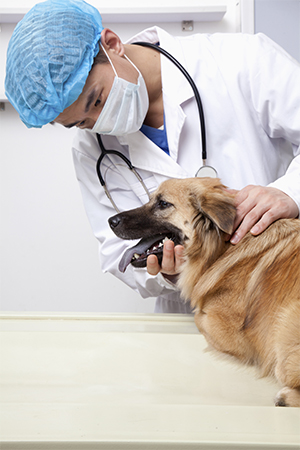Weeks ago, when a Spanish nursing assistant tested positive for Ebola virus after treating an affected patient, her dog, Excalibur, was euthanized despite massive protest. Click here for that full story. Unfortunately, with as little was known about whether or not dogs and cats carry and spread Ebola, this measure was recommended by Spanish officials. CNBC recently reported that as a result of Excalibur’s death, the nursing assistant will sue the regional Madrid government.
Back in the US, a Dallas nurse also tested positive for Ebola, but Texas officials decided to take a different approach with Nina Pham and her dog – instead of putting Bentley down, they elected to send him into a 21-day quarantine, with Texas A&M veterinarians monitoring him. Click here to read about Bentley's joyfull reunion with his guardian!
While this quarantine was underway, as reported by Dr. Ernie Ward, the CDC released a set of questions and answers regarding pets with possible exposure to Ebola. Still, nothing had been released from veterinary officials — until now.  AVMA Working Group quarantine guidance
AVMA Working Group quarantine guidance
Interim guidelines have now been established by the American Veterinary Medical Association Ebola Companion Animal Response Plan Working Group and posted on the CDC’s webpage. These guidelines discuss how to quarantine dogs and cats after exposure to humans with confirmed Ebola virus disease.
This document was created using an expert group of veterinarians, scientists and public health experts. As there is still little data on Ebola relating to companion animals, it was created by extrapolating information from other species (including humans). The interim guidance provides information to prepare state response plans in the hopes that people don’t overreact to the disease.
Thankfully, there have been “no reports of dogs or cats becoming sick with Ebola or of being able to spread Ebola to people or animals.” Unfortunately, it is unknown whether fur, the body, or the feet of animals can transmit Ebola to humans or other animals. That said, dogs aren’t considered a risk factor for human infections. Since Ebola is transmitted by bodily fluids or blood, pets should be kept away from these fluids to prevent the possible risk of having to place the pet into quarantine.
If a pet is thought to be at risk of Ebola exposure
According to the repot, several key factors should be assessed if a dog or cat is thought to be at risk of Ebola infection. These factors include:
- Identification and medical history
- Assessment of risk exposure and infection
- Assessment of the pet’s activities
If a quarantine of a pet is required, specific criteria must be met to ensure quarantine is successful. Specifically, the report provides criteria for:
- Transporting a pet to a quarantine facility
- Appropriate use of personal protective equipment (PPE)
- How to handle contaminated objects
- Appropriate cleaning and disinfecting
- Use of two physical containment levels (e.g., a crate in a secured facility)
- Isolation (no other access to domestic or wild animals)
- Providing a safe environment for the pet according to the Animal Welfare Act (AWA)
- Free access to water and a place for urination and defecation
As a veterinarian, I was glad to see these guidelines released to help prevent any unnecessary euthanasia in the future. While these guidelines are only “interim,” they provide an excellent start by leading experts in the veterinary and public health field to prevent concern or unnecessary panic from this devastating outbreak.
If you have any questions or concerns, you should always visit or call your veterinarian -- they are your best resource to ensure the health and well-being of your pets.
